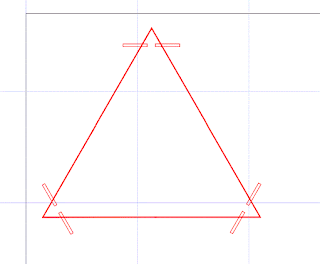- Concept
- Decision Matrix
- Experimentation and Feasibility
- Manufacturing
- Testing
We can (and should) refine, repeat and return to any/all of these stages throughout our project and use trial and error to discover how to best construct a box that will fit within the given parameters:
- 2 inch sides
- cube or similar shape
- 2 fixed sides
- two movable joints (free or friction joints)
For creating the movable joints, we have these materials available to us to consider:
- interlocking materials- this would be a friction method of connecting two or more pieces of materials such as acrylic or wood. Examples would be zipper-like "teeth" or dovetail joints
- screws
- dowels
- glue
- tape- such as contact paper
We also will be judged by the following criteria:
- Performance of the finished product
- Aesthetic
- Durability
- Manufacturing and assembly
- Repeatably
- # of steps needed for assembly
- # of materials needed
With this in mind, we each set of to begin designing our boxes and creating parts and prototypes using the laser cutter and Inkscape.
I decided to base my box design off of an octahedron. This would present an interesting challenge, because none of the triangular sides meet at 90°
Credit: Wikipedia
I was envisioning one triangle flap opening using a friction method and the other using magnets... but before I get to that stage I need to conceptualize my box and experiment with the triangular sides and see how they can connect to each other.
My first order of business was to figure a way to attach the triangles. One option is to create notches in the corners of each triangle so that I could wrap a rubber band, wire or string (depending on what kind of tension and elasticity I desired) around the notch and connect it to the notches on the other triangles. I've attempted the diagram below to explain this idea.
Using Inkscape, I drew a triangle and created two thin rectangles as notches. Since the laser cutter will cut every line shown below in red, it doesn't matter that the rectangles extend past the triangle.
I had just enough time to cut my triangles before class ended. Here are my first experimental triangles!





No comments:
Post a Comment